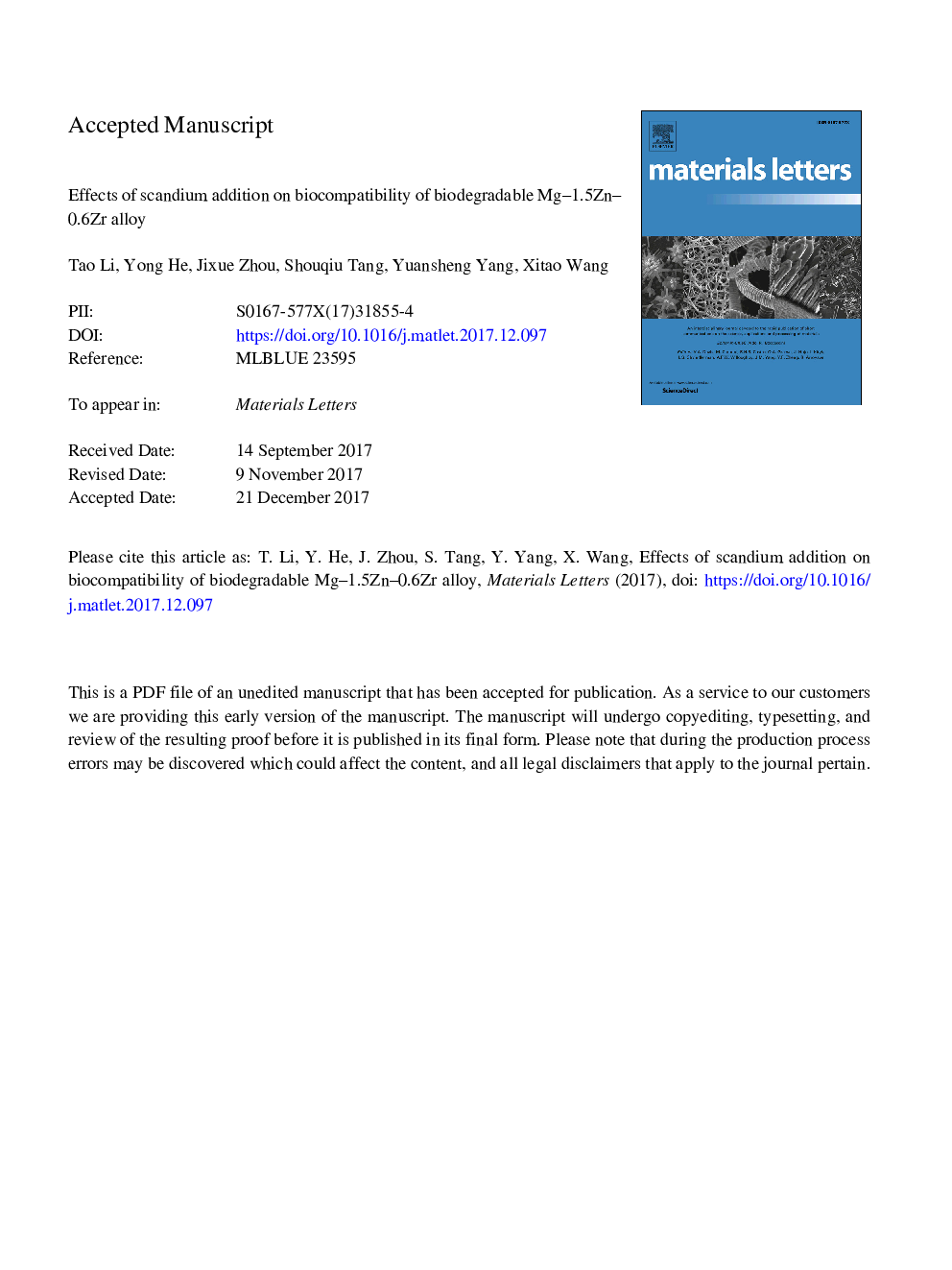| Article ID | Journal | Published Year | Pages | File Type |
|---|---|---|---|---|
| 8014879 | Materials Letters | 2018 | 11 Pages |
Abstract
Heretofore, the effects of scandium on the biocompatibility of biodegradable magnesium alloys are extremely limited recognized. In the present study, four Mg-1.5Zn-0.6Zr-xSc (xâ¯=â¯0, 0.2, 0.5, 1.0â¯wt%) alloys were fabricated and their hydrophilicity, cytotoxicity, and hemocompatibility were investigated. The contact angle measurements revealed that addition of Sc improved the hydrophilicity of the alloys. For biodegradable alloys, perfect hydrophilicity could promote the tissue attaching on implant surface, establishing a benign biological reaction and improving the therapeutic effectiveness. The viabilities of L-929 cells and SP2/0 cells for all the alloys were about 100% and 90% compared to negative control, respectively. No obvious differences existed in cell viabilities between different Sc contents. With increasing addition of Sc, the hemolysis percentages and the degree of platelet activation increased. It deteriorated the hemocompatibility of the alloys. Proteomics, genomics, and in vivo investigations are needed in the future to get more deep understandings of the biocompatibility of Sc.
Related Topics
Physical Sciences and Engineering
Materials Science
Nanotechnology
Authors
Tao Li, Yong He, Jixue Zhou, Shouqiu Tang, Yuansheng Yang, Xitao Wang,
